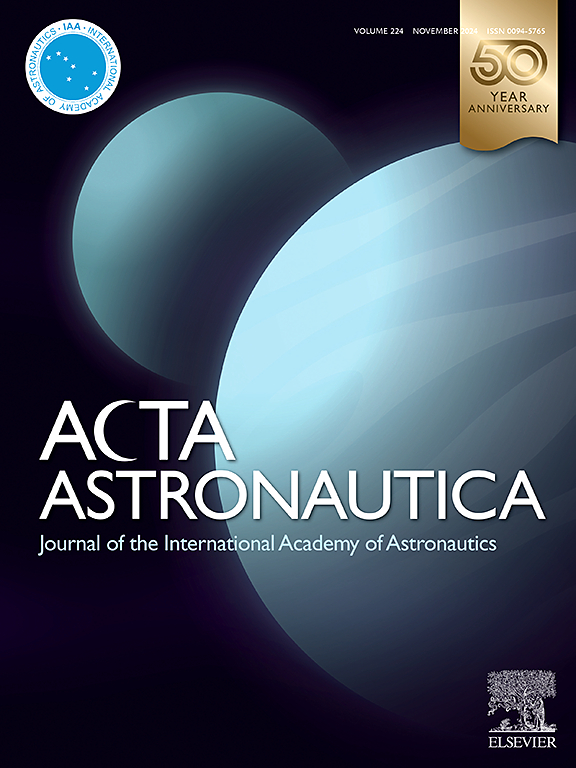建立以月球为中心的法律制度,以维护和平与可持续地利用地月空间:提出初步措施
IF 3.4
2区 物理与天体物理
Q1 ENGINEERING, AEROSPACE
引用次数: 0
摘要
地月空间是地球对地静止轨道之外的重要区域,已经成为美国和中国等主要航天国家关注的焦点,这些国家正在发展基础设施,以支持其月球任务。这些国家正在制定国家政策和战略,以推进它们在地月空间的利益;然而,现有的国际法律框架主要是为地球轨道和近地活动设计的,不足以应对维护该区域和平与可持续行动的复杂挑战。1967年的《外层空间条约》是现行空间法的基础,为和平利用外层空间和月球设定了“双轨”体系。然而,月月活动相互关联的性质使维护月空间和平的努力复杂化。此外,虽然《外层空间条约》和相关软法律提供了防止有害干扰的一般原则,但它们在解决地月空间的独特需求方面仍有不足。为了应对这些新出现的挑战,本文主张建立一个以月球为中心的法律制度,以适应地月空间的具体情况。这种制度应纳入更严格的规章,以处理地月和月球活动的新发展,并应以现有的外层空间法律为基础。作为初步步骤,本文建议加强“完全和平目的”原则,建立明确的执行规则以保障完全和平用途,完善“适当考虑”原则,并制定针对地月的交通管理和空间碎片减缓准则,以加强可持续性。此外,促进美国和中国之间的合作至关重要。这些国家必须共同努力,制定一个相互认可的规则框架,以防止竞争升级和潜在冲突,确保地月空间仍然是一个和平和可持续的领域。本文章由计算机程序翻译,如有差异,请以英文原文为准。
Creating a lunar-centric legal regime to preserve peaceful and sustainable uses of cislunar space: Proposing initial measures
Cislunar space, the significant region beyond Earth geostationary orbit, has become a focal point for leading spacefaring nations like the United States and China, which are developing infrastructure to support their lunar missions. These nations are establishing national policies and strategies to advance their interests in cislunar space; however, existing international legal frameworks, designed primarily for Earth-orbit and near-Earth activities, are inadequate to address the complex challenges of preserving peaceful and sustainable operations in this region. The 1967 Outer Space Treaty, foundational to current space law, sets a ‘dual-track’ system for peaceful use of outer space and the Moon. Yet, the interconnected nature of cislunar and lunar activities complicates efforts to maintain peace in cislunar space. Additionally, while the Outer Space Treaty and related soft laws offer general principles to prevent harmful interference, they fall short in addressing the unique demands of cislunar space. In response to these emerging challenges, this paper advocates for the creation of a lunar-centric legal regime tailored to the specific conditions of cislunar space. Such a regime should incorporate stricter regulations that address new developments in cislunar and lunar activities and should build upon existing outer space laws. As initial steps, this paper proposes strengthening the ‘exclusively peaceful purposes’ principle, establishing clear implementation rules to safeguard exclusively peaceful uses, refining the ‘due regard’ principle, and creating cislunar-specific Traffic Management and space debris mitigation guidelines to enhance sustainability. Moreover, fostering cooperation between the U.S. and China is crucial. These nations must work together to develop a framework of mutually recognized rules to prevent escalating competition and potential conflicts, ensuring that cislunar space remains a peaceful and sustainable domain.
求助全文
通过发布文献求助,成功后即可免费获取论文全文。
去求助
来源期刊

Acta Astronautica
工程技术-工程:宇航
CiteScore
7.20
自引率
22.90%
发文量
599
审稿时长
53 days
期刊介绍:
Acta Astronautica is sponsored by the International Academy of Astronautics. Content is based on original contributions in all fields of basic, engineering, life and social space sciences and of space technology related to:
The peaceful scientific exploration of space,
Its exploitation for human welfare and progress,
Conception, design, development and operation of space-borne and Earth-based systems,
In addition to regular issues, the journal publishes selected proceedings of the annual International Astronautical Congress (IAC), transactions of the IAA and special issues on topics of current interest, such as microgravity, space station technology, geostationary orbits, and space economics. Other subject areas include satellite technology, space transportation and communications, space energy, power and propulsion, astrodynamics, extraterrestrial intelligence and Earth observations.
 求助内容:
求助内容: 应助结果提醒方式:
应助结果提醒方式:


